To kick off the Guild of Future Architects’ Future Imagination Summit, Monroe and Zurkow created an interactive, edible map and visioning workshop looking at the present and future of food equity and climate change in New York’s 5 boroughs. 50 participants ate, engaged in discussion, and played — both with their food and other art-making material on Nov 7, 2019, on the top floor of NYU’s Metrotech outpost in Brooklyn.
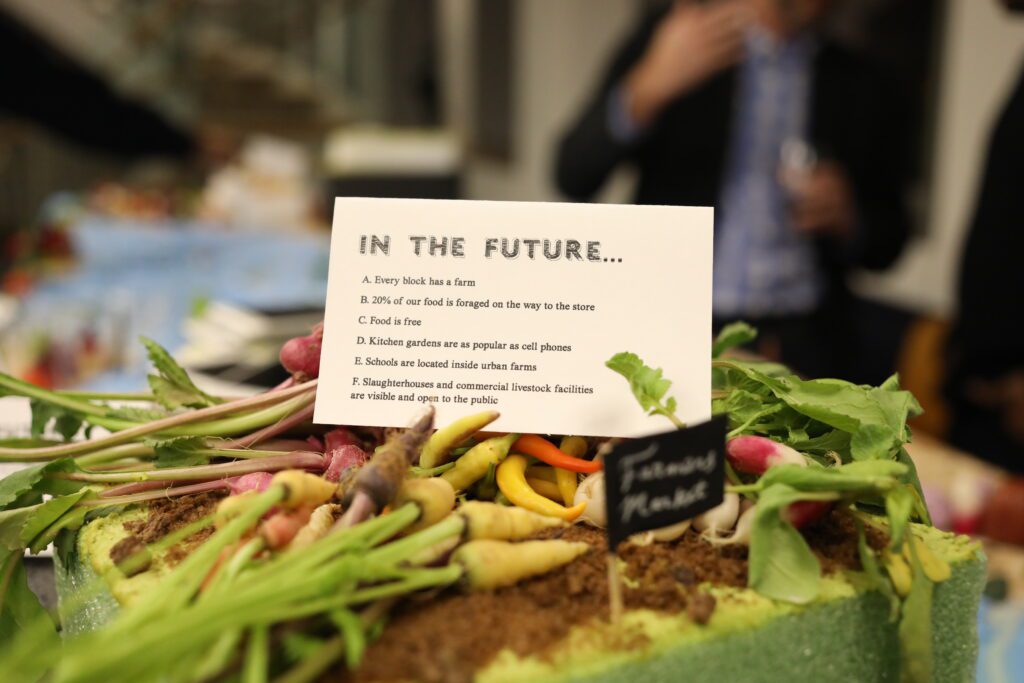
We asked the attendees to use their wild imaginations to move beyond the general “sustainability“ and climate chaos rhetoric, to dream about a radically improved future in which access to food and a clean environment is equitably distributed. The dinner and workshop invited creative disruption, asking how we can equitably mitigate climate changes’ effects (which range from heat and flooding to fear and atomization).

Four 10’ x 3’ maps of different areas of New York City and its surrounding waterways were laid out onto four high-top tables. Each map was printed on linen and then covered in a transparent pane of plexiglass. On top of the plexi, we laid out edible foodscapes to loosely represent a map (land, water, bridges, buildings) topped with different points of interest to represent our lopsided, inequitable food present.
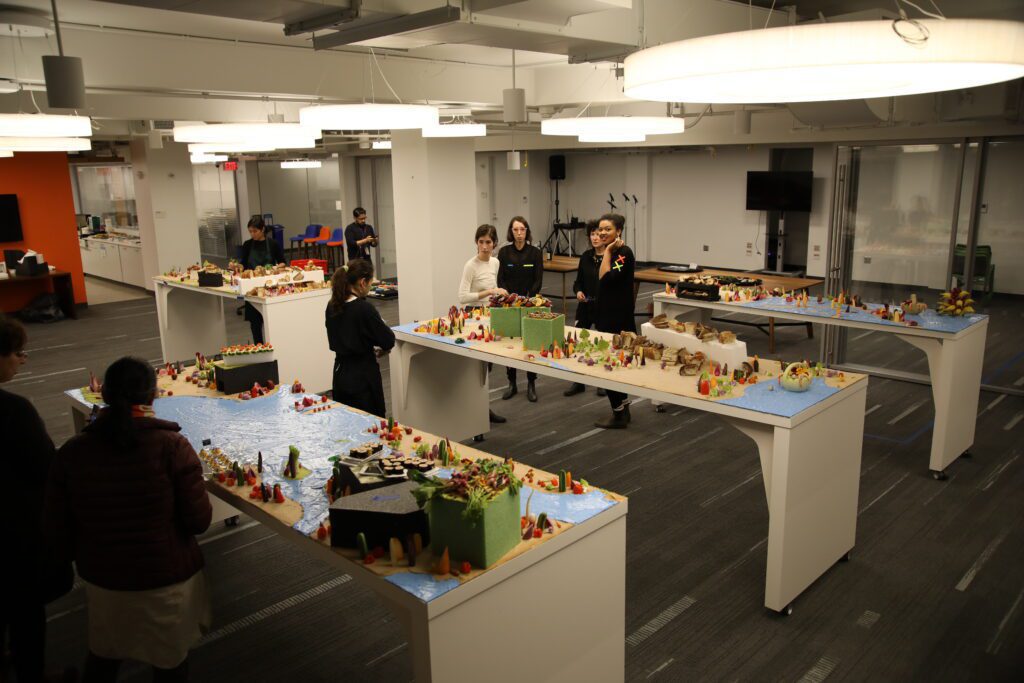
Gentrified swaths of the city were mapped with “aspirational” chains such as Sweetgreen and Whole Foods — food marketed as good for you, good for everybody, good for the planet, but that usually has messy social, economic, and ecological ramifications. This map represents the “business as usual” immediate future, with the assumption that in the near future, few significant changes have been made to mitigate the way we eat and the processes of climate change.
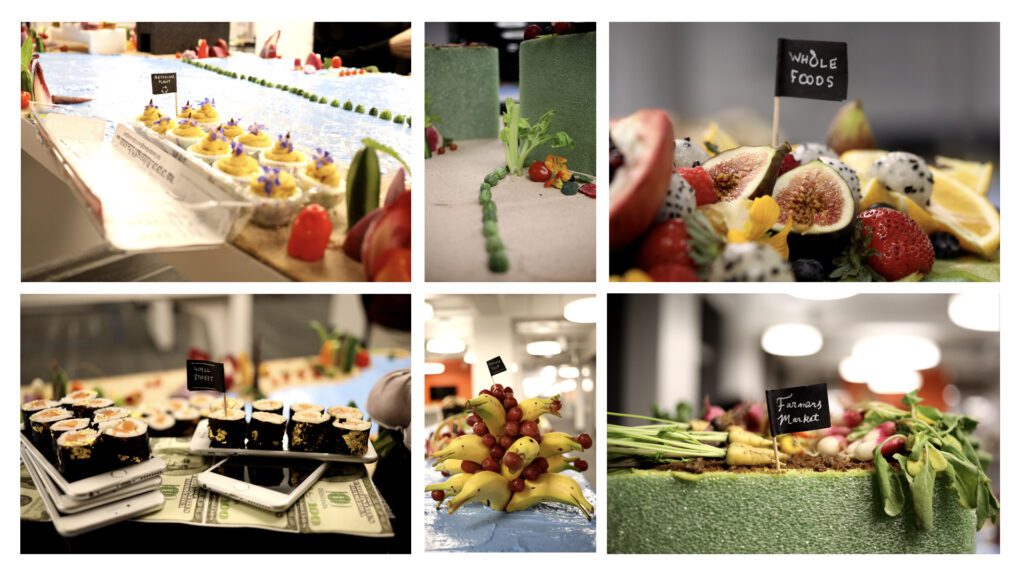
The food representations on the map were both literal and more abstract: for example, a styrofoam block with an edible garden splayed out across the rooftop represented Brooklyn Grange’s rooftop farm, with pumpernickel crumb “dirt” and miniature vegetables. Sweet Green featured an array of lettuce cups with watered-down ethnic food themes. A Wall Street food court featured stacks of iPhones with grocery store sushi rolls covered in edible gold leaf.
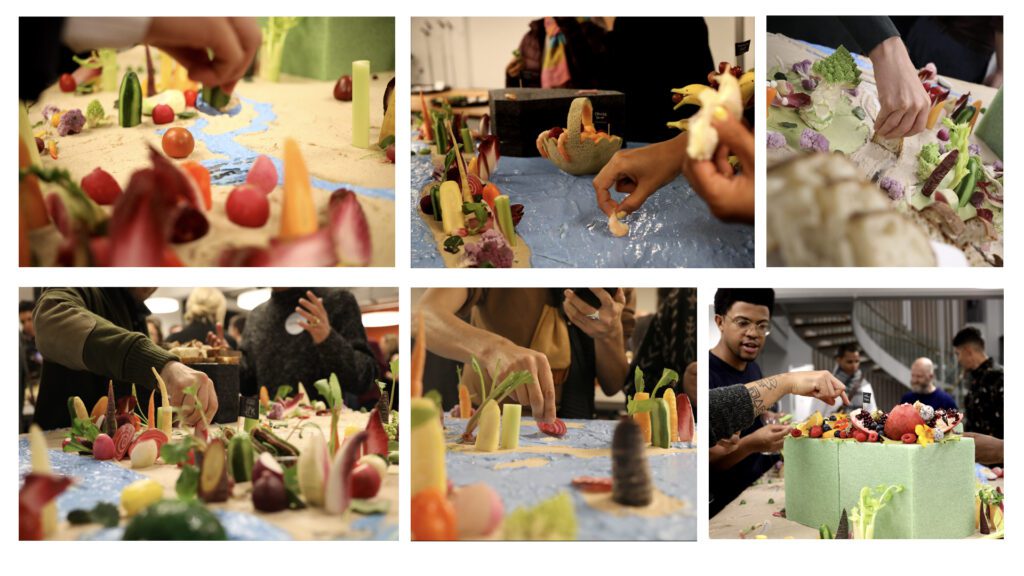
Mechanics: Participants were instructed to “eat the map” by wiping at its surface with bread or crudité and by picking up the displayed finger foods. They were given ~30 minutes to eat their way through these topographies, with the idea being that while some of these foods are arranged in bizarre or fantastical ways, they’re largely very familiar, upper-middle-class, fast-casual, corporate-lunch-esque foods (wrap sandwiches, pork buns, sushi, salad bar), many of which come from brands that allude in their marketing to some kind of vague environmental virtuousness that may or may not hold up under scrutiny.
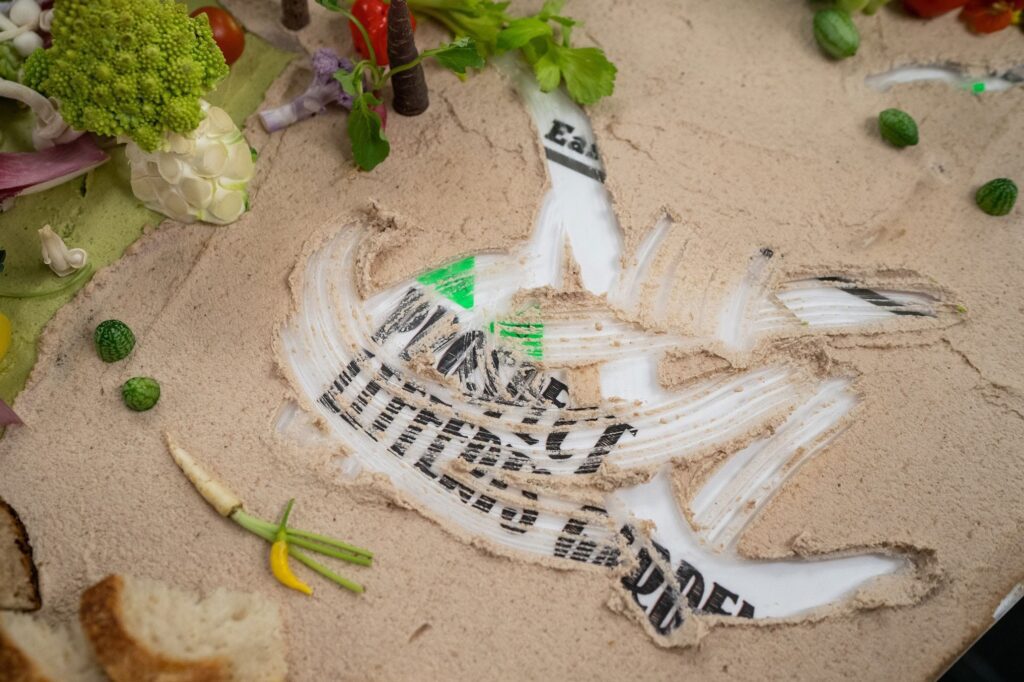
As guests ate, their actions of dipping/scraping revealed parts of the print map below, allowing for a tactile understanding of what they were eating. The maps also featured discussion prompt cards to encourage them to think critically about the nature of the “business casual lunch” as well as to start turning their attention towards the future. (Photo: RL Photography)
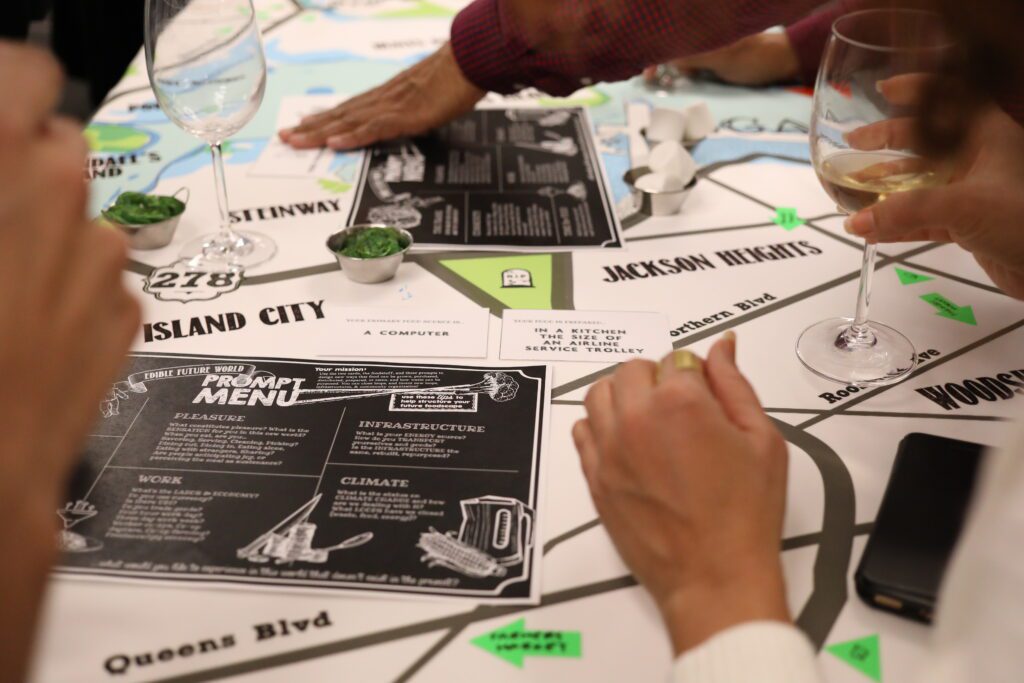
After 30 minutes, staff members removed the food-covered plexiglass, revealing the entirety of the clean maps underneath. Guests remained in place around each table and were split into eight groups of ~six people each (two groups per map). Each group was assigned to whatever “points of interest” on the map were closest to them. Constraint cards and cheat sheets were passed around. Materials to play/work were revealed.
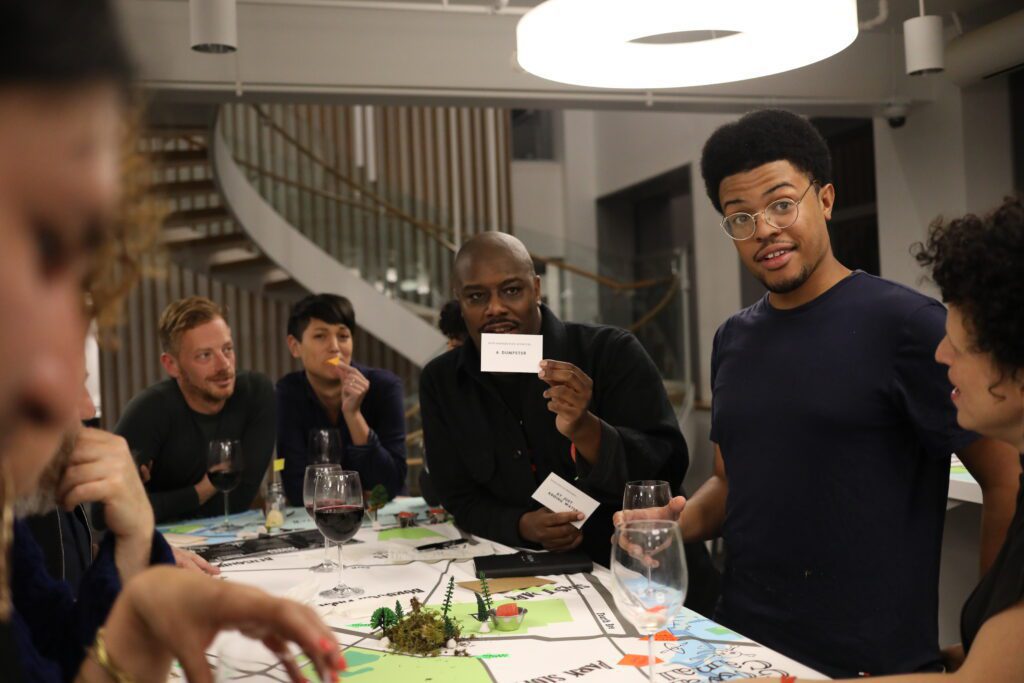
Each group was tasked with coming up with a better map of the future according to provided constraint cards, using a selection of provided creative materials to populate their map with loosely symbolic structures. Their goal was to build a future city that eats in a way that is sensitive to climate change, thinking about the equitable structures that could facilitate this — i.e. rooftop farms, community composting, communal kitchens, etc. They had 45 minutes to talk, model, and build. Building materials on a side table included pens, paper, string, balsa wood, small flags, marshmallows, moss, alligator clamps, putty, etc.
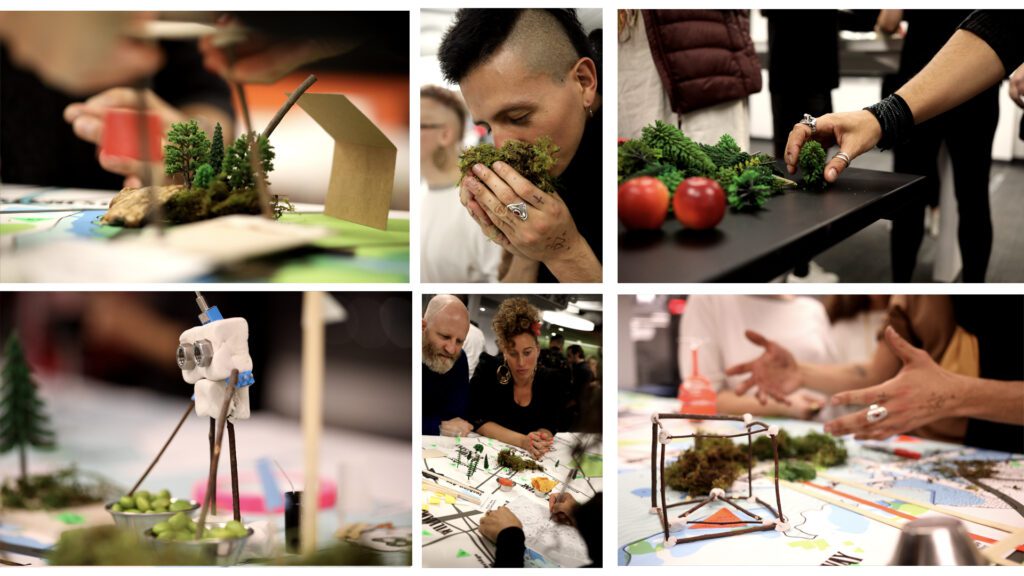
For the final half-hour, groups shared their future edible scenarios with the room. These included a planetary restaurant, Rikers Island converted to a mushroom farm and well-being center (a generously-spirited upgrade to Ellis Island), and an automated community grow center.